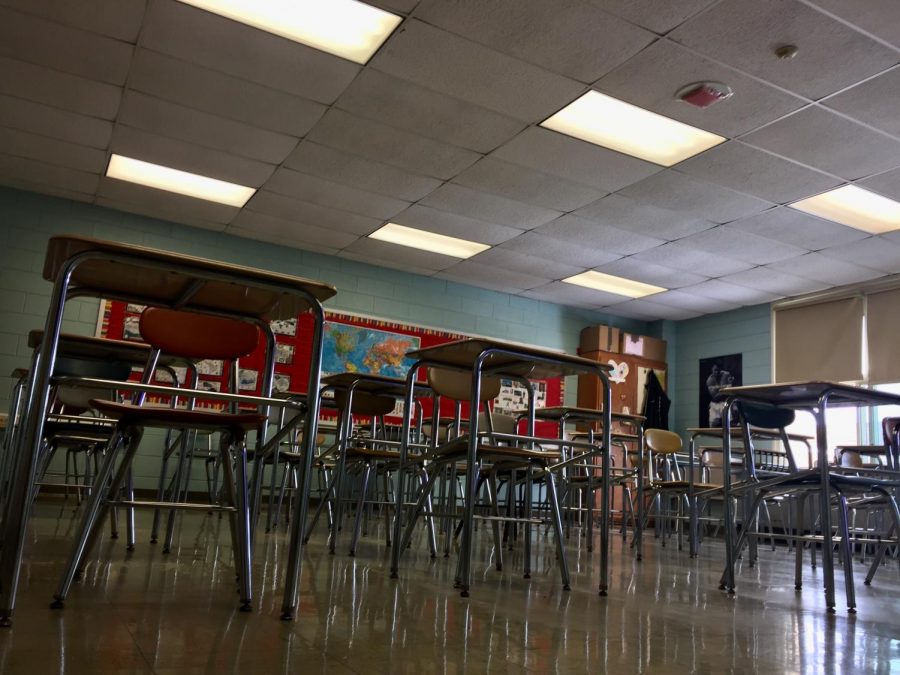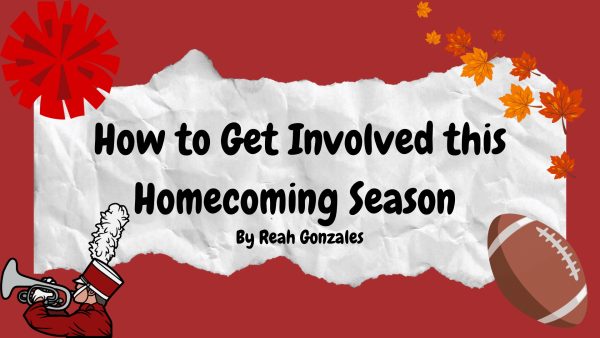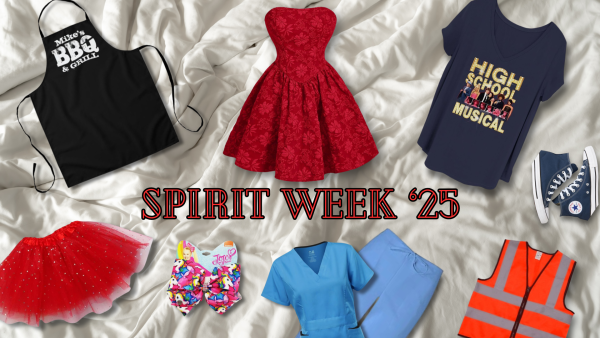It’s Time To Talk
While an entire nation debates the second amendment, let’s talk about what we can do here in schools – today.
Photo by Phoebe Lawson
It is frightening to think about gun violence in our schools but, we should continue to stay vigilant with preventative measures.
On February 14, 2018, seventeen students and adults were killed in a school shooting at Marjory Douglas High School in Parkland, Florida and twelve were injured. This is the most recent of a seemingly never-ending list of tragedies related to gun violence plaguing our daily news. The school shooting has been an all-too-common part of our daily conversation. I remember the first time I recognized such an event was the Sandy Hook Elementary shooting, in which twenty seven people were murdered. This tragedy seemed to have kicked off a series of devastating events which have become too popular since.
So now, it is time we finally have an in-depth conversation about gun violence, how to prevent it, and how to deal with it after it occurs.
(Note: This article will mainly pertain to incidences of school shootings, rather than acts of gun violence in general.)
What to look out for (How to identify a possible shooter):
In order to begin this discussion, we must first be able to identify who may become a possible shooter. Here, it is important to remember that these are possible signs that one may commit an act of gun violence. Observation of one of these traits may not definitively mean that the person committing the action is dangerous. However, it is important to note these behaviors and types of people and play close attention to such persons because they are more likely to indicate violent behavior.
According to the American Psychological Association (APA), these are some warning signs for youth violence:
- People who have trouble controlling their feelings (such as anger)
- Significant changes in behavior/increases in anger
- Victims of bullying (who are possibly seeking revenge. Note: If you see someone being bullied, say something. Here is a link to our school website where you can report any acts of bullying. If you are not a member of the school district, you can report to a trusted person or legal officer, as some cases of bullying are now considered to be illegal.)
- Lack of empathy
- Access or fascination with weapons
- Withdrawal from friends and usual activities (significant change)
- Regularly feeling rejected or alone (this could also be a result of bullying)
- Frequent physical fighting
- Increase of drug/alcohol use
- Increased participation in risk-taking behaviors
What to do if you realize someone shows these signs:
- Don’t spend time alone with them
- If there is a specific situation setting this person off, try to remove them from it
- TELL SOMEONE: a family member, guidance counselor, teacher, school psychologist, coach, member of the clergy, school resource officer, or friend would be invaluable in this situation.
- Ask an experienced professional for help
- Most importantly, don’t experience this alone and take any signs or threats seriously
There are also resources such as Mental Health First Aid which aim to educate community members about how to identify, understand, and respond to signs of mental illness (which may inspire these violent actions) before problems become crises.
Basically, if you see something, say something. Seek help from others if you suspect that someone is about to commit any act of violence (not only gun violence).
What to do in case of immediate emergency:
Should you find yourself in a case where you have to react quickly as shooting is happening, do the following:
- Run away- this is the most important action in protecting yourself and ensuring your wellbeing so that you may help others.
- Know escape routes. (In Pat-Med, there are maps in every classroom which detail escape routes in case of emergency. In any case, know where you are and where the closest exit is at all times.)
- React immediately- although shock is powerful and often paralyzing, it is important to be able to recognize that the most important thing to do is remove yourself from the situation as soon as possible.
- Forget your belongings- in the end, your life is more valuable than any laptop, phone, document, note, or other item which is important to you.
- Run directly away- some people suggest running in a zig-zag to reduce a shooter’s ability to shoot you. However, this may end up giving them more time to do so. Therefore, run directly, as quickly as possible to safety.
- Bring others with you (only if convenient)
- Grab a weapon to defend yourself (only if convenient). (Do not suffer from functional fixedness- an umbrella, heavy book, or anything else which can be used to delay a person from attacking you will work.)
Recovery after an act of gun violence has been committed:
If an act of gun violence does occur, here are some tips for recovery:
- Talk about it: honor your feelings by communicating them with others (therapists, friends, family, counsellors)
- Try to focus on other things to give your mind a break from stress
- Don’t forget to take care of yourself: you tried so hard to survive, make sure that those efforts are not for naught by maintaining your physical, social, and emotional wellbeing.
- If you have lost someone: keep in mind that grief is a long process, honor that person by honoring yourself, take care of yourself, and remember that things will become manageable eventually.
Additionally, there are many resources which open themselves up in most cases of violence. Be sure to ask about counseling programs that may be offered locally (at a school, library, or public center) or even search for an online forum to support those in states of extreme distress. However, the goal of this research is to help prevent people from having to deal with gun violence. This leads us to the most important part of the article…
How to prevent gun violence:
The best way to react to a situation of gun violence is to prevent it from ever happening in the first place. Here are some helpful methods of preventing such heinous acts:
- Invest in funding for gun violence research (by giving time, money, or even helping to spread awareness)
- Assist others in accessing mental health services (direct those in need to people or places that will help them control and reduce their mental health issues in healthy ways)
- Place emphasis on interpersonal violence (point out that any act of violent should be taken seriously as it may lead to the manifestation of a greater act of violence down the line)
- Prioritize domestic violence prevention (the presence of a gun makes a victim five times more likely to be murdered in a domestic violence situation)
- Push for policy that will improve safety (whether federally, on a state or local level, or at school)
It is time to put an end to the 33,880 deaths per year due to acts of gun violence. Take this comprehensive list of how to deal with and prevent such situations into consideration in real life. Share this information and overall, help make this country- and this world, for that matter- a safer place.

Gr. 12
"I don’t agree with what you say but I will defend to the death your right to say it.” Evelyn Beatrice Hall

Phoebe is in her senior year of high school and has been a dedicated part of the school newspaper and Journalism class since her freshman year. Although...






